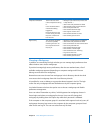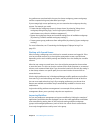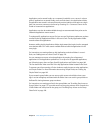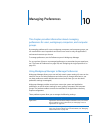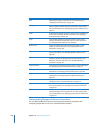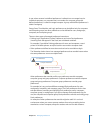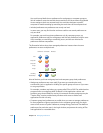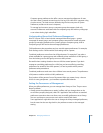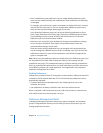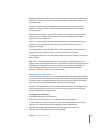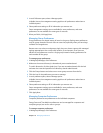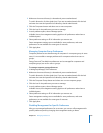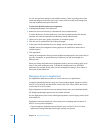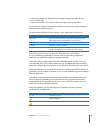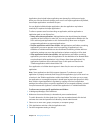
Chapter 10 Managing Preferences 159
Computer group preferences also offer a way to manage the preferences of users
who don’t have a network account but who can log in to a Mac OS X computer using
a local account. (The local account, defined using the Accounts pane of System
Preferences, resides on the user’s computer.)
To manage local accounts, set up a computer group that supports local-only
accounts. Preferences associated with the computer group and with any workgroup
a user selects during login take effect.
Understanding Hierarchical Preference Management
Mac OS X Server v10.5 or later includes managed hierarchical groups—groups
composed of nested groups, and computer groups composed of nested computer
groups. By managing preferences for a parent group or computer group, child or
computer groups also receive these managed preferences.
Child preferences take precedence and can override parent preferences. For example,
Dock settings set for a child override Dock settings set for a parent.
Combined preferences come from the child and parent. For example, if you make a
printer available for a parent group and a different printer available to a child group, a
user who belongs to the child group can access both printers.
Be careful when creating situations where a child has several parents. If you don’t
manage an overriding preference for a child, but you have conflicting overriding
preferences for several of the child’s parents, it is hard to predict which parent’s
preference takes precedence.
Combined preferences work even when children have several parents. The preferences
of all parents combine with the child’s preferences.
Don’t make a child a parent of one of its parents. When you create a loop—where a
child is its own grandparent—you introduce unpredictable behavior.
Setting the Permanence of Management
When you define preferences, you can manage them Always or Once. They are set to
Never by default:
 Always causes the preferences to remain in effect until you change them on the
server. When properly designed, a Mac OS X application that conforms to standard
preference conventions does not allow a user to modify preferences set to Always.
You can use Always to ensure users can’t add or remove Dock items.
Some applications might allow the user to change the Always managed preference,
but the next time the user logs back in, the preference reverts to the managed
setting.



